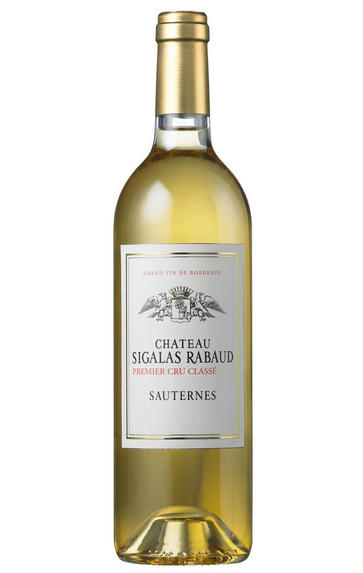
About this WINE
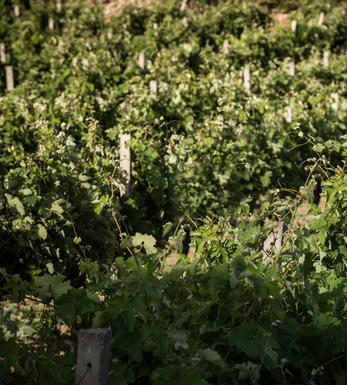
Chateau Sigalas Rabaud
Château Sigalas-Rabaud was originally part of Château Rabaud until the latter was divided up in 1903 into Sigalas-Rabaud and Rabaud-Promis. The two properties were then reunited in 1929 before being partitioned again in 1952. Sigalas-Rabaud is located in the commune of Bommes and its 33 hectares of vineyards border those of Rabaud-Promis and Rayne-Vigneau.
Sigalas-Rabaud consists of 14 hectares of vineyards planted with 98% Sémillon and 2% Sauvignon Blanc. The grapes are harvested in "tries" and are then fermented in oak barrels (33% new) where they remain for 18-20 months.
Sigalas-Rabaud's wines were always of good quality but in the 1980s the proprietor, Comte Emmanuel de Lambert des Granges, sold a part share to Domaines Cordier, owners of Lafaurie-Peyraguey. Their input resulted in a string of superb wines at the end of the 1980s and through to the end of the century. The wines can be enjoyed in youth but really benefit from 8-10 years of cellaring.
Sigalas-Rabaud is classified as a 1er Cru Classé.
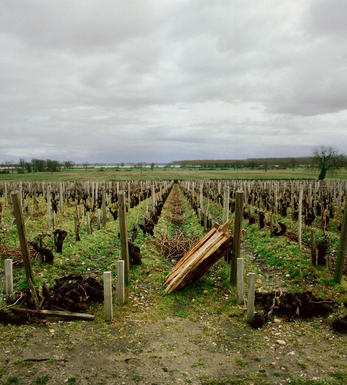
Sauternes
Sauternes is where arguably the world's finest sweet white wines are produced. The Sauternes appellation actually consists of five communes: Barsac, Preignac, Bommes, Fargues and Sauternes itself. Barsac is also an appellation in its own right.
Sauternes literally has an atmosphere different from any of the other major communes. At the southern tip of the Graves,close to the Garonne, not only is the land hillier and decidedly more bucolic but it also enjoys a specific mesoclimate of evening autumn mists which linger until well into the following day, unless burnt off by warm sunshine.
The mists are caused by the cool, spring-fed waters of the Ciron River meeting the warmer tidal Garonne, and the result is an ideal environment for the growth of the mould botrytis cinerea. When its arrival is felicitous, it feeds on the water in the ripe grapes, dehydrating them and leaving sweet, shriveled fruit.Other regions in Bordeaux (ie Cadillac, Loupiac) produce wines in a similar style from the same method, but none achieve the profundity and complexity of Sauternes.
Recommended Châteaux : Ch. D'Yquem, Ch. Climens (Barsac), Ch. Suduiraut, Ch. Rieussec, Sigalas- Rabaud, Ch. Coutet (Barsac), Ch. de Fargues, Ch. Lafaurie-Peyraguey, Ch. Doisy-Védrines (Barsac), Chateau Partarrieu, La Tour Blanche
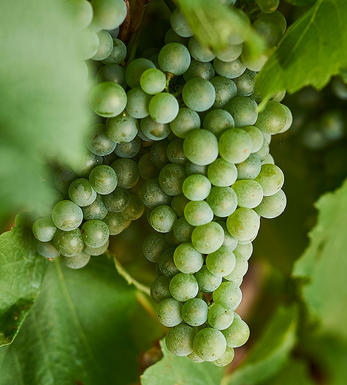
Sauvignon Blanc & Sémillon
The blend used for White Graves and Sauternes and rarely encountered outside France. In the great dry whites of Graves, Sauvignon Blanc tends to predominate in the blend, although properties such as Smith Haut Lafite use 100% Sauvignon Blanc while others such as Laville Haut Brion have as much as 60% Sémillon in their final blends. Sauvignon Blanc wines can lose their freshness and fruit after a couple of years in bottle - if blended with Sémillon, then the latter bolsters the wine when the initial fruit from the Sauvignon fades. Ultimately Sauvignon Blanc gives the wine its aroma and raciness while Sémillon gives it backbone and longevity.
In Sauternes, Sémillon is dominant, with Sauvignon Blanc playing a supporting role - it is generally harvested about 10 days before Sémillon and the botrytis concentrates its sweetness and dampens Sauvignon Blanc`s naturally pungent aroma. It contributes acidity, zip and freshness to Sauternes and is an important component of the blend.


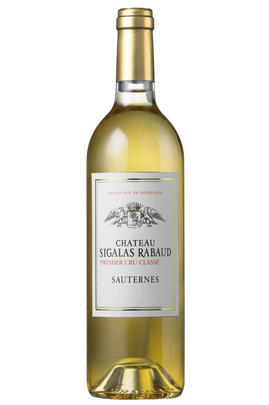
Buying options
Add to wishlist
Description
Full-bodied, rich, honeyed, and concentrated with marvellous depth of fruit. Very good grip and excellent length. A serious Sauternes with a long future ahead of it.
wine at a glance
Delivery and quality guarantee